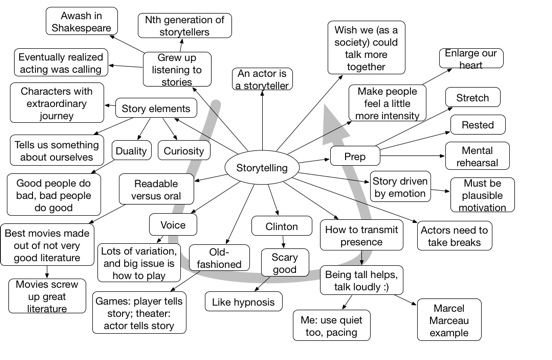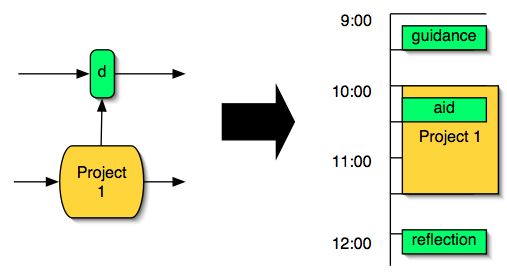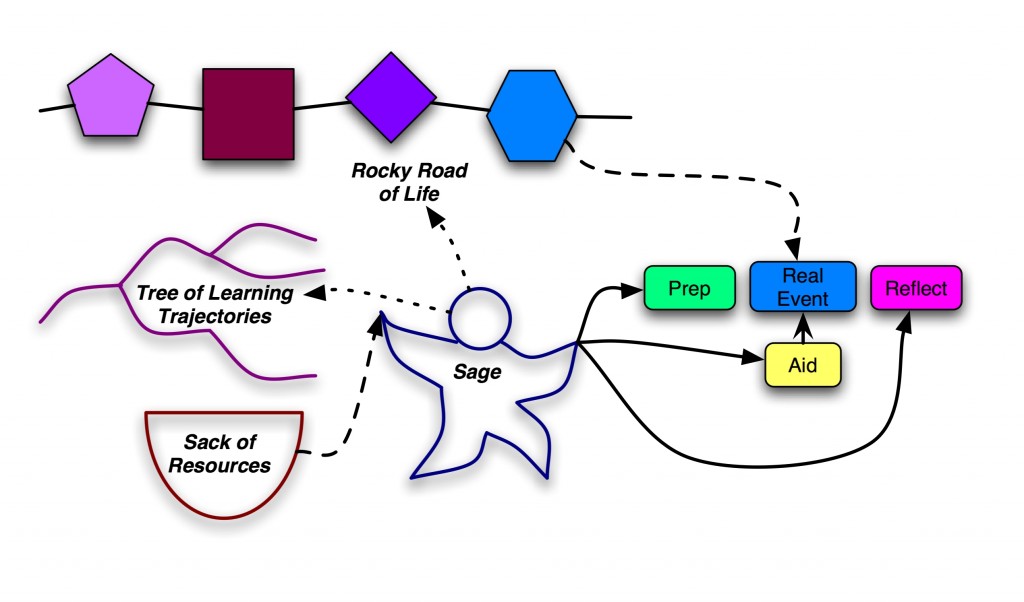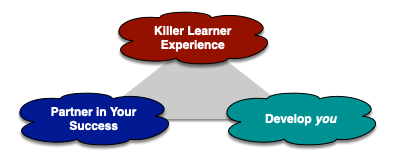I have to say that I found the comments on my initial post very interesting and challenging. A couple of themes have emerged that partly I want to elaborate on, and partly want to reflect upon. I believe in, and do try, ‘learning out loud’, so I’ll both try to elaborate and draw myself up short.
One of the themes that emerged is the rejection of the GPS idea, and extolling a preference for getting lost (I did explicitly mention that GPS’s do not help you learn the terrain, but I’ll add that they could). I want to unpack that a bit. One of the issues is, for me, where you want to learn, and where you don’t. As a definitely curious individual (in both senses, I suppose :), there’s far too much of interest for me to be able to focus on it all. As a consequence, I want to decide on what I invest effort in, and what I don’t. So, for instance, I’ve learned about keyboard shortcuts to use Word’s outline capabilities, and I can understand where others would not (tho’ I admit to wishing everyone would learn styles, as a valuable model going forward!). So, I think we’d use a mental GPS when it’s something we don’t want to learn, and we’d want a different relationship when we do. If we’re self-aware learners.
There’s also the issue of how the Sage on the Side would operate? What curricula are being used? Who’s providing the content? I will admit that while I talk a constructivist game, I do tend to err too quickly to think about designed resources. In my own defense, I will suggest that self-learning skills aren’t broadly distributed enough yet, and particularly for novices, there are times when they don’t know what they need and why it’s important. I am very much a fan of guided discovery learning (not the unguided discovery learning that was used as a straw-man opponent to instructivist in the Kirschner, Sweller, Clark article), but I do believe guidance is necessary until learners demonstrate self-learning capability. And I definitely think we can and should be developing that capability, but I’m not sanguine that we’re very good at it yet.
However, I’ve earlier talked about user generated curricula, and I think that’s really the way to go. In the long term, the communities will take ownership of the paths to competency. I’m hoping, through something like Project Tin Can (horrible name, but…), we can support defining broad paths to capability that are maintained by the community, and even self-proposed paths that are vetted by the community (says a guy who designed his own undergraduate major).
I admit that I’m trying to focus on a system that can be supporting a person in their goals with minimal human intervention. I want it to be one of the options on the table for the ‘sage’ to draw upon (e.g. the resources can be people, too), but I’m trying to make this scalable. Idealistically, I would like communities to become more other-supporting, but I think such a system would have desirable properties in terms of developing people over time.
As I think about it, I also anticipate some serendipity in the sage approach. There’s some randomness in our cognitive architecture, and I’d like to see some similar probabilistic behavior in the system recommendations. When we built the Intellectricityâ„¢ system, we had options ‘competing’ for the opportunity to be presented. We also had machine learning in the background to improve the weighting. This is where deep analytics and semantics could generate some real interesting outcomes.
And I definitely would hope that we would explicitly be working in a layer on top of the learning goals to address meta-learning or learning to learn, so we could move from providing guidance to merely suggesting resources. So, for example, despite my time trying to improve my learning, there’s still room for improvement and I welcome any assistance I can get. I’m mindful of Watts Humphrey’s work in software quality, where documenting your decisions and having them reviewed identified persistent mistakes, and allowed for continual improvement (resulting in large decreases in errors, much more accurate schedules, and other tangible benefits). The approach is certainly applicable to other areas of design and work, and I think it’d be fascinating to have systemic support (because the overhead is high enough that I haven’t been able to instill it in myself ;).
Given that we’re all novices in some areas while experts in others, I think the notion of at least a bootstrap from some support makes sense to assist transition into a community of practice. I don’t think this is fundamental opposition to rhizomes,connectivism, or anything else, but I welcome your thoughts. I do think that the notion of a tree of trajectories may be too rigid, so I’ll have to ponder that, but I’d like to devolve that decision to the community of practice.
Going beyond just the notion of the system, I believe that we need to start thinking more broadly about our curricula, pedagogy, and more. That’s not new, but I do believe a shift from learning events to continual development is not only needed, but doable. Given that each of us is a member of multiple communities, it may look more like a network, but that’s OK.




 An absolutely killer learning experience
An absolutely killer learning experience